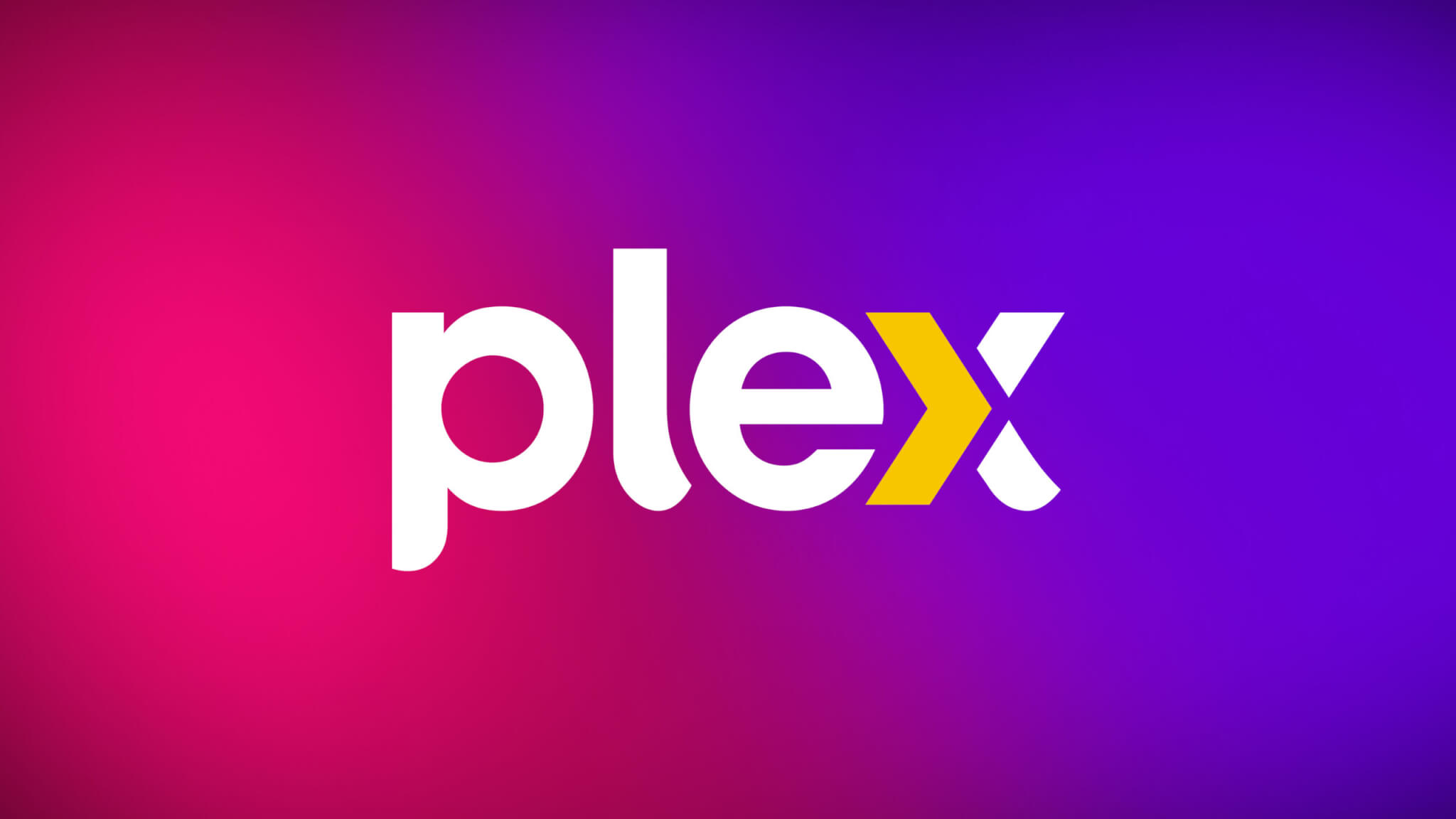We are also changing how remote playback works for streaming personal media (that is, playback when not on the same local network as the server). The reality is that we need more resources to continue putting forth the best personal media experience, and as a result, we will no longer offer remote playback as a free feature. This—alongside the new Plex Pass pricing—will help provide those resources. This change will apply to the future release of our new Plex experience for mobile and other platforms.
Before now I was on the sunk cost fallacy of not wanting to teach my extended family how to use Jellyfin instead of plex but after this I’m already mid-way through setting up a Jellyfin docker container on my server and I only found out an hour ago
Jellyfin is still way behind Plex in general performance but I keep a VM of it running and updated, for when the day comes that Plex is absolutely worthless.
Which at this rate, is, well, we’re getting there.
Jellyfin depends on proprietary Microsoft .NET, even on Linux.
It’s still better than Plex and Emby, which are fully proprietary, and have no source code. But I will stick with sshfs with kodi, and nginx plus mpv for now.
I’ve been testing out jellyfin for the last couple months but it doesn’t really fill the void of this specific feature that’s being locked behind a pay wall. If anyone has good recommendations for securely and reliably hosting jellyfin behind SSL and auth with email password resets where I don’t have to worry about it as much as Plex.
I use jellyfin locally but for a handful of remote clients I have I may well block off their access they’re not going to be able to figure out my hand spun services and wall of text.
Forget the Auth, use VPN profiles as access controls. Give them to trusted folks and you’re gold.
Dumb question but should there be VPNs operating on both ends, server and client? Or just the client because I’m guessing the server might change the connection address.
A VPN Server on the server or home network (look into PiVPN for instance), and a VPN Client on clients (look at openvpn for instance).
Good luck and let me know if you have any further questions - I’m more than happy to answer!
Authentik + jellyfin SSO plugin?
I haven’t tried it out personally, but I use authentik, for that you can just create a password policy, then add a new stage for identification (just make sure to add the email field), and an email stage, then create a flow.
More work on your end than paying someone else obviously.
Alas my TV (LG WebOS 2) doesn’t have an application for Jellyfin, or I’d have switched years ago :-(
Is there an emby app available or Kodi? The base of Jellyfin should work in either. Plug and play as far as I’m aware with maybe some issues for certain versions.
I’m not pirating a bunch of shows just to pay Plex for the privilege of watching it.
Also remember to give them your credit card, name and address for the privilege of pirating the content.
Even better, it’s now a nice database of who companies and governments can go after when they want or need to!
It always has been… just now they want you to pay.
lmao me either
Jellyfin ftw
So basically… this is a blatant cash grab, and a nearly 200% one depending on the level of service you pay/paid for. Wonder how long it will be before the lifetime pass is discontinued and everyone gets forcibly moved over to a monthly subscription model
Every service is doing this as expenses and interest rates go up. Its the driving force of enshittification. All the VCs want internet startups to finally turn a profit.
I’ve been meaning to set up a homeserver with plex recently but will defnitely go for jellyfin now that I read this thread.
So I have a lifetime Plex pass, but my friend (who is remote) does not. Does this change mean they have the have a Plex pass to connect to my device remotely?
Edit: thanks for the info! After I posted I continued reading and realized that question was already answered! Appreciate the help!
From what I saw, they will be able to remotely stream from your PMS (if you don’t have Plex Pass) for a fee of $2/month or $20/year.
Option 1: Remote playback with a Plex Pass
Upgrading to any Plex Pass subscription is a great option for server owners, as it ensures all users accessing the Plex Media Server can stream remotely, without an additional charge. Even if you don’t run your own Plex Media Server, a Plex Pass subscription will not only allow you to stream remotely from any server to which you have access, but also lets you make use of other Plex Pass functionality like Skip Intro and Skip Credits.
No. You’re good.
As a plex pass lifetime user, this doesn’t change anything for me.
I am, however, blown away that the price went from $75 CDN to $350 CDN over the last 10 years!! That’s just insane!
They have sales, and it’s not really worth paying the “MSRP” price. My wife got Plex Pass for $80 back in 2023, and I got it late last year for $90.
How exciting, I’m getting a kick up the arse to change platforms! Seems to be the theme of 2025!
I used to use Plex, then one day my internet was down and since Plex couldn’t phone home, it wouldn’t let me log in to watch media ON MY LAN.
So yeah it’s inherently broken. That’s before you even consider the licensing.
Why would you expect this to NOT be paid? It requires them to be running servers to stream the media through, I wouldn’t expect this to be a free feature.
I dislike Plex for several reasons, but asking for payment for stuff that costs them money is completely justified.
It doesn’t require Plex servers, though. I do this on jellyfin for free.
How do you do this on Jellyfin? The only ways I’m familiar with is to expose Jellyfin to the internet or access it through Tailscale, would love to hear alternatives.
Edit: From the replies I think that either I don’t understand how this feature works or many people here don’t, so I’ll give an overview of my understanding and explain why this is different from anything you can do on Jellyfin and what’s the closest you can come.
You are running Plex-home in your house, Plex-home connects to Plex-server hosted by Plex and establishes a reverse connection that’s only accessible by Plex-server, i.e. you can’t access your Plex-home outside of your house. When you login on Plex you’re logging in to Plex-server and if you’re in the same network as Plex-home you get redirected to form a direct connection with it, if not (and for me Plex keeps failing this verification) you connect to Plex-server and every request you make gets forwarded to Plex-home and when you ask for media it gets routed through Plex-server. This is very different from exposing Plex-home directly to the internet, in order for someone online to access your Plex-home they need to have taken control of Plex-server and then they’re limited by the API between those two (whichight be different from the Plex-home API) to try to escalate into your machine.
With Jellyfin there’s no server side component, you access Jellyfin directly every time, so in order to access Jellyfin outside of your house it needs to be accessible for everyone. The closest you can come up with is using a third party authentication server, for example by having a VPS running Authentik/Authelia/etc and hosting Jellyfin behind that authentication. This gets you a similar level of security because someone would need to compromise your Auth and then your Jellyfin to get into your server. However I’m not sure Jellyfin clients would know how to handle a third party authentication service, and would probably just crap their pants and prevent you from logging in. You could still access it in a browser, but not on native clients like the one on your TV or Fire Stick.
If you don’t have this VPS with authentication you’re exposing Jellyfin directly to the internet, which means that any flaw in Jellyfin security immediately compromises your home server. And while I don’t expect there to be many big or obvious flaws, there’s a reason why stuff like Authelia or Authentik exists, and besides the convenience of a SSO they exist because proper authentication is hard and has many pitfalls, and they offer security in the knowledge that their main focus is authentication, whereas on most other services authentication is just one of the features they offer so it might not be as secure.
My home connection is behind cgnat so I got a free VPS from oracle (provides a public ip address), install caddy on VPS, install tailscale on VPS and router, expose routes from LAN to tailscale network.
Now you can use caddy to expose, for example, a docker container (jellyfin) at 192.168.1.100 to subdomain.exampledomain.com with ssl cert provided by caddy.
VPS also requires some other stuff like ddclient and fail2ban.
I pieced this all together myself… it’s doable if you spend some time reading.
That exposes Jellyfin to the internet
Yes exactly. What do you think plex is doing?
Using a relay server to separate online from home connection
I don’t see anything in the linked article about a relay server
Reverse proxy
That exposes Jellyfin to the internet, so it’s my option 1.
Nope.
It’s not that hard to get a reverse proxy up, get a free DDNS, and a SSL certificate from let’s encrypt.
https://www.linuxserver.io/blog/2020-08-21-introducing-swag
This is a pretty solid one stop shop for handling all reverse proxy with SSL certificate generation and renewal for jellyfin and other applications like sonarr, radarr, transmission, ombi and lists of others that are pretty much drag and drop configuration files if you’re not mucking with the application’s default ports.
That exposes Jellyfin to the internet, so it’s not the same feature
My dude if you are connecting from outside your local network you are “exposed” to the Internet in some way. What magic are you thinking Plex is doing? Is someone hand deliverying the packets via USPS?
Plex runs relay servers where your Plex server will connect to the relay and your player will also connect to the relay, making both ends of the connection egress type as far as routing and access control goes. https://support.plex.tv/articles/216766168-accessing-a-server-through-relay/
It’s optional and likely not everyone uses it, but this provides a way for Plex to do remote streaming without the Plex server being reachable directly from the internet.
Separately, it costs money for Plex to run.
In some way is different from directly, on Plex you’re behind a relay server so it’s akin to being behind a VPS running Authentik/Authelia in front of the service on your home. Compromising the relay server does not necessarily compromises your home server, so it’s not direct like putting Jellyfin on a reverse Proxy would be.
And somehow you think that Plex isn’t exposing your server to the Internet for streaming while not on your local network?
Okay there Mr. Madison.
It’s not, not directly at least, and that’s what everyone is ignoring here. You probably understand the value on Authelia/Authentik but you’re failing to see that the Plex relay server is taking that same mantle here, so even if someone managed to compromise the relay server it’s still not on your home server, whereas exposing jellyfin directly to the internet only requires one service to be compromised.
Wait a moment. I always thought that Plex’s servers only facilitate authentication (to verify your account) and discovery (to help your device find your server). They do not handle the actual media data. And if there is no Direct Remote Access, Relay usage is capped at 1 minute per day for free users. This looks like a cash grab to me.
Why is this getting upvoted? Plex isn’t running a server. You are. Your computer and your media files are quite literally “the server” that is serving the files to you remotely. Plex is at best doing authentication.
For remote streaming they do, here are their docs on it https://support.plex.tv/articles/216766168-accessing-a-server-through-relay/
From that documentation:
So, your Plex Media Server basically “relays” the media stream through our server so that your app can access it since the app can’t connect with your server directly.
Because he’s right. You can’t access your own server remotely without plex’s infrastructure (provided you don’t just set up that infrastructure yourself). You don’t need to open ports or anything. Your server reaches out to plex server, which creates an entry point to your network. Your stream is then either routed through their servers or possibly setup as P2P stream.
That’s just not correct. Mate. It’s setting up a secure route from the client to your Plex server. It’s essentially doing what Tailscale does but just handling the client setup automatically via their Plex authentication. They are authenticating the connection and setting up the route from the client to the server. They are not handling petabytes of data people are streaming. The ISPs are doing that.
Ok sure, they aren’t routing, just using P2P like I mentioned. It’s still not possible to access remotely without using plex services. This is what you are paying for. If you don’t want to pay for their auto-config remote streaming it’s easy enough to do it yourself.
I can’t back this up but I highly doubt that the media is played through Plex’ server.
Its not. It is setting up a secure route from the client to the server. That is quite literally not a server. No one thinks Tailscale is a Server service. That’s essentially all they are doing but just handling adding the clients automatically when they authenticate.
I dumped Plex years ago even though I paid for it. Too many issues with it. Constantly losing movie folders, unable to stream to the device I wanted to watch on, wrong codec, wrong sound, etc, etc. I gave up. I’m sure it worked fine for most, but it got to be a pain. Switched to Jellyfin and a DDNS address and have had zero problems since. And it’s free.
With Plex every time I try to sync new content I put in the folders it says I’m unauthorized and have to close the server and reopen it.
Haven’t bothered to trouble shoot it yet as it’s annoying but not annoying enough.
Another company fucked by executives.
I just want to make sure I read this correctly. It says that if you’re a Plex plass holder already that remote streaming changes won’t affect your service. This means that if I have the lifetime subscription and host my own server than users whom have not payed for Plex pass can continue to access this server without issue correct?
Historically, that’s how they usually rolled out features requiring a Plexpass - It usually depended on the server owner owning Plexpass. This move, however, makes me think they’ll probably change that for shared to others via E-mail.
Yeah. The day they start making something subscription that isn’t included in the lifetime pass is the day they get their office burned down by a lot of angry people.
Correct
Thanks
Hellooooo jellyfin!
Only use open source software
They do not have chromecast support. (Atleat the last time i checked) Thats a deal breaker for me, would love to use it.
I run Jellyfin on Chromecast with Google TV every day, it works super well.
Unless you mean casting from your phone, then I don’t know.
I will check it out!
… I’m using Chromecast and Google TV, though Chromecast isn’t very good, really, and Google TV stared showing commercials every now and then since a while ago, so that too will be on its way out.
But yeah, they’re supported
IIRC it has it. Not if you’re behind VPN or a tunnel. Only over HTTPS.
Hmm i need to revisit it again. Thanks!
I just confirmed it has it. You need to be on the same subnet, which is why VPN won’t work. But then everything shows up as castable
Jellyfin is figgin Great 😃👍
How to kill a service speedrun any%
They think they have enough users locked in to just pay over setting up another server. They might.
Lol jellyfin
Time to move to Jellyfin for the rest of their users?


















